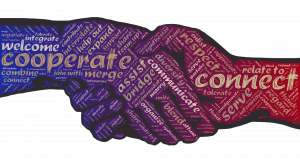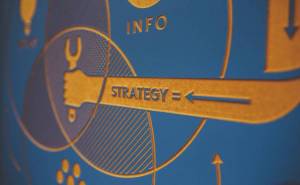The world of marketing has become increasingly more complex in recent years. With omnichannel approaches, platforms, and various approaches to content. it can sometimes seem that a marketer’s work is never done. But, thankfully, new ways of dealing with our marketing issues have also arisen, including process improvement strategies, and new ideas.
How to Build Ideal Partner Personas for Channel Marketing
You will often hear the term channel marketing used, and it will often be used in conjunction with the term partner personas, but what do these terms mean? How can they benefit you and just how do you go about building this so-called ideal partner persona?
What is Channel Marketing?
At its simplest, channel marketing is about being involved in the total lifecycle of a product; from the point of initial production to its final usage by the consumer. That lifecycle can consist of several levels of people, organizations, and activities. Not to forget who is involved in the process as a whole.
Partners in your channel marketing help you promote the benefits of the product, either to end consumers or to other links in the chain. This can also include distributors, affiliate partners, agents, resellers, and other third parties.
Channel marketing is based on the idea that the relationship is both symbiotic and mutually beneficial. Unlike your normal way of promoting and advertising your products, your channel partners may be independent businesses who are promoting the same product as you, which means that your product can reach a different audience than if you were operating alone.
Third parties benefit as well as your business, as they may receive a percentage of overall sales or, in the case of resellers, they can access discounts if they buy your product in bulk. Channel marketing can also be of advantage if you do not have the (human or financial) resources to facilitate the required levels of marketing alone.
The Partner Persona

Image Credit: pixabay; thank you!
The first thing to emphasize is that a partner persona is not a real person. Instead, it is a representation of who your ideal channel marketing partner may be. It is most often based on market research and data analysis of who your target demographic consumers are. There are several benefits in defining that partner persona:
- Identify – helping you find partners who are relevant to you (your business type, your market, and your target customers).
- Understand – aiding you in understanding what drives your partners, what their perspectives are, and what motivates them.
- Communication – A good definition of partner personas means it can be easier to communicate with them, especially if you share a common UCaaS platform.
- Engagement – It is easier to engage with any partners if you have a clear understanding of who they are and what they want.
- Customization – clearly define your partner personas – it makes it easier for you to customize any partner programs to be mutually beneficial.
How to Build Ideal Partner Personas

Image Credit: pixabay; thank you!
Creating your perfect partner persona is not just a case of jotting down a ‘wish list’. If you approach this exercise without due care, and careful research, then you could do your business more harm than good. There are a number of factors that contribute to the partner persona:
- Demographics – ideally, they should already be working with the demographic groups you want to target (or be positioned to do so). For example, if you want to offer content writing services, it would make sense to partner with an organization offering SEO optimization services and keyword research.
- Size and Reach – the whole idea of bringing partners on board is to extend your reach and to increase sales. There is little point in partnering with a sole unit that has a limited customer base.
- Credibility and Expertise – you want new partners to have some experience in your particular sector. Experience and knowledge of the product – or at least the product type – means they have credibility with potential customers.
- Cohesiveness – when an organization offers products or services that complement your own, then they can make an ideal partner. For example, if you are offering a complex SaaS package, then a business that can offer localization testing could be a good partner to have.
- Values – sometimes you have to look beyond basic financial factors and consider whether a potential partner meets your company’s values. For example, if you are producing reusable silicone cups and mugs, you will probably not want to partner with a company that produces a high volume of single-use plastic items.
- Benefits – there should be some equality as far as benefits are concerned. That is not to say that any profits are equally split but more that you both benefit from forming any sort of partnership. That benefit does not have to be financial; it could mean increases (for you both) in brand awareness, visibility, reach, and reputation. For partners, it could also include a widening of their knowledge base if you offer product training.
- Customer service -how does your potential partner provide customer support? Do they have a dedicated call center or use a high degree of automation such as IVR?
- Goals – Ideally, a good partner should share some of your goals and motivations. If you both want to work towards the same – or similar – goals, then it is more likely that a successful partnership can be established.
How Do You Establish a Successful Channel Partner Program?

Image Credit: pixabay; thank you!
So, you’ve spent some time creating what you see as your ideal partner persona. And further research has identified potential partners that you feel fit that persona. How do you begin to create the channel partner program you have imagined. Some factors include the following:
- Profile – build a profile of your potential partner. Where do they do marketing/selling? What challenges will they face in marketing your product? What help – if any – do they need in order to be a successful partner?
- Program – put together what you see as a good reseller program. List the benefits they will receive and what support or assistance you can offer.
- Introduction – finding the right way to introduce yourself can be crucial. Will you send an introductory letter with detailed information? Or will you arrange for a meeting (in person or virtual) to discuss this in more detail?
- Timeframe – suggest a timeframe for the partnership to be authorized and established. This should include aspects such as product training (if needed) and an agreed start date for them offering your products to customers. This could also include a checklist for various goals or progress points.
- Application and/or Contract – if needed, ask the reseller to make a formal application listing their qualifications to sell on your behalf and experience. If details are already agreed upon through meetings or calls, then draw up a contract that defines the relationship between you and what you both expect from the agreement.
- Policies – this can be included in any contract and will cover all policies and procedures to do with your partnership. For them, that could include how to deal with leads and for you, it could also cover other factors such as training programs.
The Takeaway
Successfully marketing (and selling) your product has many different approaches. For example, you may want to combine content marketing for SaaS with a solid channel marketing strategy that includes partners who complement your product well. How you identify partners and build a program will also depend on the industry you operate in.
Software developers seeking partners may often ask what is QA and its place in your current business model. A business offering organic fruit and veg is going to look for a partner who values sustainability. Customizing your partner personas to suit you is crucial when approaching the issue.
Top Image Credit: kaboom; pexels; thank you!
The post How to Build Ideal Partner Personas for Channel Marketing appeared first on ReadWrite.


Comentarios recientes